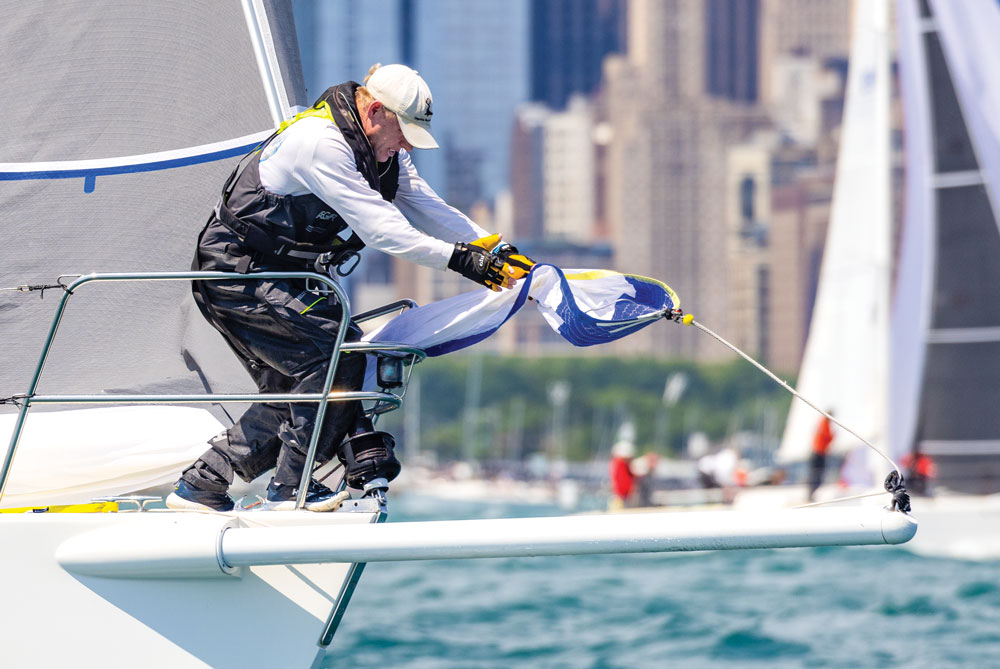Asymmetric spinnaker skills
This sail can be key to getting downwind fast with a few skills and a bit of practice
For many sailors spinnakers conjure thoughts of mayhem, chaos and shouting. Anxiety reigns over some at the prospect of the windward and leeward marks approaching and the skipper calling for a set or a douse. To some, the concept of flying a spinnaker is a foreign art they avoid trying for fear of “messing it up.” They happily step aside and let someone else do it, while they focus on something less daunting. But spinnakers, and particularly asymmetrical spinnakers, are easy to set, douse and trim when a few simple but important processes are followed. Once the technique is established and practiced, excited anticipation of both the top and the bottom marks, as well as the fun downwind sleigh ride in the middle, is met with a renewed opportunity to shine.

To make sure you’re getting the most out of arguably one of the most fun legs of the race, here are a few tips on how to make the transition to asymmetrical spinnakers. But keep in mind that practice is the most important ingredient.
The teams leading any fleet will tell you about the amount of work done outside of the actual race course to fine tune boat setup, boat handling, maneuvers and team communication. It will take time and practice to hone your asymmetrical trimming skills, or repetition to work out the kinks in dousing. Practicing off the race course offers time and space to mess up, and you definitely will. Even if you can’t dedicate a day to practice ahead of an event, do a few practice sets, jibes and douses before the race.
The set
Clear communication is key heading into any maneuver. As the boat approaches the windward mark, be sure to clearly communicate the type of set that is required. This will be either a bear away set or a jibe set. The bear away set is more common and easier to execute. You can also bear away set and prep for a quick jibe once the spinnaker is full. For the purposes of this article, we will continue with a bear away set.
The skipper or tactician will let the bow team know that the boat is on lay line for the mark and call for the number of boatlengths to the mark. The bow team should have at least three to four boatlengths to prepare for a set. However, if you’re just learning or have new people on board, more prep time is a good idea.
Getting ready for the set starts with pre-setting the tack of the spinnaker to the end of the bowsprit or prod. The bow person feeds the tack out while the pit person or trimmer tails the tackline until the sail is at the end of the sprit. With the tack set, the bow person pulls the clew and head of the sail partially out of the hatch or the sail bag and the mast person leaves the rail to tend to the halyard at the mast.

Comments